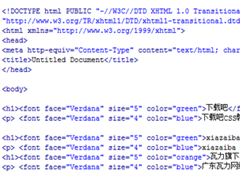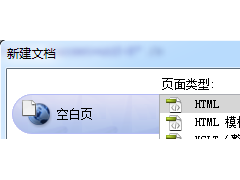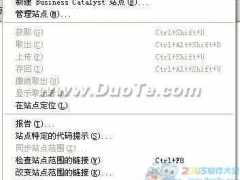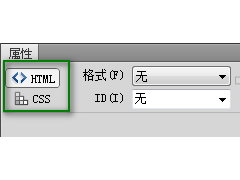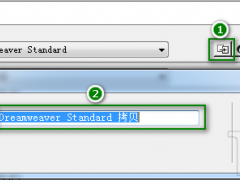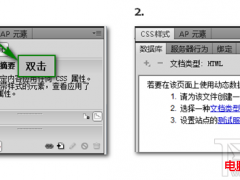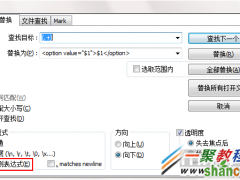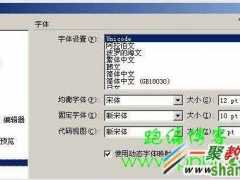这篇文章主要介绍了深入讲解Python中面向对象编程的相关知识,是Python入门学习中的基础知识,需要的朋友可以参考下
Python从第一天开始就是面向对象的语言。正因为如此,创建和使用类和对象是非常地容易。本章将帮助您在使用Python面向对象编程的技术方面所有提高。
如果没有任何以往面向对象(OO)的编程的经验,那么可能要了解一些基本的入门课程就可以了,或者至少某种形式的教程,让你有了解基本概念。
但是,这里会比较少地介绍面向对象编程(OOP):
OOP术语概述
类: 用户定义的原型对象,它定义了一套描述类的任何对象的属性。属性是数据成员(类变量和实例变量)和方法,通过点符号访问。
类变量:这是一个类的所有实例共享的变量。类变量在类,但外面的任何类的方法定义。类变量不被用作经常作为实例变量。
数据成员:保存与类和对象关联的数据的类变量或实例变量。
函数重载:一个以上的行为特定功能的分配。执行的操作所涉及的对象(自变量)的类型不同而不同。
实例变量:所定义的方法内,只属于一个类的当前实例的变量。
继承:类的特点,即都是由它派生其他类的转移。
实例:某一类的一个单独对象。属于类Circle一个obj对象,例如,是类Circle的一个实例。
实例化:创建一个类的实例。
Method : 一种特殊的函数,函数在类定义中定义。
对象:这是由它的类中定义的数据结构的唯一实例。一个对象包括两个数据成员(类变量和实例变量)和方法。
运算符重载:一个以上的函数功能,特定的操作符分配。
创建类:
类语句将创建一个新的类定义。类的名称紧跟在关键字class后跟一个冒号,如下所示:
?
1 2 3 class ClassName: 'Optional class documentation string' class_suite类有一个文档字符串,它可以通过类名.__ doc__访问。
class_suite由所有定义的类成员,数据属性与函数组件的语句。
例子
下面是一个简单的Python类的例子:
?
1 2 3 4 5 6 7 8 9 10 11 12 13 14 class Employee: 'Common base class for all employees' empCount = 0 def __init__(self, name, salary): self.name = name self.salary = salary Employee.empCount += 1 def displayCount(self): print "Total Employee %d" % Employee.empCount def displayEmployee(self): print "Name : ", self.name, ", Salary: ", self.salaryempCount是一个类变量,其值将是这个类的所有实例共享。这可以从类中或外部进行访问,访问形式为 Employee.empCount。
第一个方法__init__()是一种特殊的方法,这就是所谓的类构造函数或当创建该类的一个新实例Python调用的初始化方法。
声明就像正常函数中一样,不同的是第一个参数到每个方法是类的方法。 Python增加了self参数列表;不需要把调用的方法都它列入。
创建实例对象:
要创建一个类的实例,调用类名并传递任何参数给__init__方法接收。
?
1 2 3 4 "This would create first object of Employee class" emp1 = Employee("Zara", 2000) "This would create second object of Employee class" emp2 = Employee("Manni", 5000)访问属性:
可以访问使用点运算符来访问对象的属性。而类变量使用类名来访问,如下所示:
?
1 2 3 emp1.displayEmployee() emp2.displayEmployee() print "Total Employee %d" % Employee.empCount现在,把所有的概念放在一起:
?
1 2 3 4 5 6 7 8 9 10 11 12 13 14 15 16 17 18 19 20 21 22 23 24 #!/usr/bin/python class Employee: 'Common base class for all employees' empCount = 0 def __init__(self, name, salary): self.name = name self.salary = salary Employee.empCount += 1 def displayCount(self): print "Total Employee %d" % Employee.empCount def displayEmployee(self): print "Name : ", self.name, ", Salary: ", self.salary "This would create first object of Employee class" emp1 = Employee("Zara", 2000) "This would create second object of Employee class" emp2 = Employee("Manni", 5000) emp1.displayEmployee() emp2.displayEmployee() print "Total Employee %d" % Employee.empCount当执行上面的代码,产生以下结果:
?
1 2 3 Name : Zara ,Salary: 2000 Name : Manni ,Salary: 5000 Total Employee 2在任何时候可以添加,删除或修改类和对象的属性:
?
1 2 3 emp1.age = 7 # Add an 'age' attribute. emp1.age = 8 # Modify 'age' attribute. del emp1.age # Delete 'age' attribute.除了使用正常的语句来访问属性,可以使用以下函数:
getattr(obj, name[, default]) : 访问对象的属性。
hasattr(obj,name) : 检查一个属性是否存在。
setattr(obj,name,value) : 设置一个属性。如果属性不存在,那么它将被创建。
delattr(obj, name) : 要删除一个属性。
?
1 2 3 4 hasattr(emp1, 'age') # Returns true if 'age' attribute exists getattr(emp1, 'age') # Returns value of 'age' attribute setattr(emp1, 'age', 8) # Set attribute 'age' at 8 delattr(empl, 'age') # Delete attribute 'age'内置的类属性:
每个Python类会继续并带有内置属性,他们可以使用点运算符像任何其他属性一样来访问:
__dict__ : 字典包含类的命名空间。
__doc__ : 类的文档字符串,或None如果没有定义。
__name__: 类名称。
__module__: 在类中定义的模块名称。此属性是在交互模式其值为“__main__”。
__bases__ : 一个可能是空的元组包含了基类,其在基类列表出现的顺序。
对于上面的类,尝试访问这些属性:
?
1 2 3 4 5 6 7 8 9 10 11 12 13 14 15 16 17 18 19 20 21 22 #!/usr/bin/python class Employee: 'Common base class for all employees' empCount = 0 def __init__(self, name, salary): self.name = name self.salary = salary Employee.empCount += 1 def displayCount(self): print "Total Employee %d" % Employee.empCount def displayEmployee(self): print "Name : ", self.name, ", Salary: ", self.salary print "Employee.__doc__:", Employee.__doc__ print "Employee.__name__:", Employee.__name__ print "Employee.__module__:", Employee.__module__ print "Employee.__bases__:", Employee.__bases__ print "Employee.__dict__:", Employee.__dict__当执行上面的代码,产生以下结果:
?
1 2 3 4 5 6 7 8 9 Employee.__doc__: Common base class for all employees Employee.__name__: Employee Employee.__module__: __main__ Employee.__bases__: () Employee.__dict__: {'__module__': '__main__', 'displayCount': <function displayCount at 0xb7c84994>, 'empCount': 2, 'displayEmployee': <function displayEmployee at 0xb7c8441c>, '__doc__': 'Common base class for all employees', '__init__': <function __init__ at 0xb7c846bc>}销毁对象(垃圾回收):
Python的删除不需要的对象(内建类型或类的实例),自动释放内存空间。由Python定期回收的内存块不再使用的过程被称为垃圾收集。
Python的垃圾回收器在程序执行过程中运行,当一个对象的引用计数为零时触发。一个对象的引用计数改变为指向它改变别名的数量。
当它分配一个新的名字或放置在容器(列表,元组或字典)的对象的引用计数增加。当对象的引用计数减少使用 del 删除,其基准被重新分配,或者它的引用超出范围。当一个对象的引用计数变为零,Python会自动地收集它。
?
1 2 3 4 5 6 7 a = 40 # Create object <40> b = a # Increase ref. count of <40> c = [b] # Increase ref. count of <40> del a # Decrease ref. count of <40> b = 100 # Decrease ref. count of <40> c[0] = -1 # Decrease ref. count of <40>当垃圾回收器销毁孤立的实例,并回收其空间一般不会注意到。但是,一个类可以实现特殊方法__del__(),称为析构函数被调用时,该实例将被摧毁。这个方法可以用于清理所用的一个实例的任何非内存资源。
例子:
__del__()析构函数打印实例,它即将被销毁的类名:
?
1 2 3 4 5 6 7 8 9 10 11 12 13 14 15 16 17 #!/usr/bin/python class Point: def __init( self, x=0, y=0): self.x = x self.y = y def __del__(self): class_name = self.__class__.__name__ print class_name, "destroyed" pt1 = Point() pt2 = pt1 pt3 = pt1 print id(pt1), id(pt2), id(pt3) # prints the ids of the obejcts del pt1 del pt2 del pt3当执行上面的代码,它产生以下结果:
?
1 2 3083401324 3083401324 3083401324 Point destroyed注意:理想情况下,应该定义类的单独的文件,那么应该使用import语句将其导入主程序文件。详细请查看Python- 模块章节,导入模块和类的更多细节。
类继承:
不用从头开始,可以通过上面列出的括号父类的新类名后,从一个已经存在的类派生它创建一个类。
子类继承父类的属性,可以使用父类的这些属性,就好像它们是在子类中定义的一样。子类也可以覆盖父类的数据成员和方法。
语法
派生类的声明很像它们的父类; 从基类的列表后给出类名继承:
?
1 2 3 class SubClassName (ParentClass1[, ParentClass2, ...]): 'Optional class documentation string' class_suite例子
?
1 2 3 4 5 6 7 8 9 10 11 12 13 14 15 16 17 18 19 20 21 22 23 24 25 26 27 28 #!/usr/bin/python class Parent: # define parent class parentAttr = 100 def __init__(self): print "Calling parent constructor" def parentMethod(self): print 'Calling parent method' def setAttr(self, attr): Parent.parentAttr = attr def getAttr(self): print "Parent attribute :", Parent.parentAttr class Child(Parent): # define child class def __init__(self): print "Calling child constructor" def childMethod(self): print 'Calling child method' c = Child() # instance of child c.childMethod() # child calls its method c.parentMethod() # calls parent's method c.setAttr(200) # again call parent's method c.getAttr() # again call parent's method当执行上面的代码,产生以下结果:
?
1 2 3 4 Calling child constructor Calling child method Calling parent method Parent attribute : 200类似的方式,可以按如下继承多个父类的类:
复制代码 代码如下:
class A: # define your class A
.....
class B: # define your calss B
.....
class C(A, B): # subclass of A and B
.....
可以使用issubclass()或isinstance()函数来检查两个类和实例的关系。
issubclass(sub, sup) 如果给定的子类子确实是超sup的子类布尔函数返回true。
isinstance(obj, Class) 如果obj是Class类的实例,或者是类的一个子类的实例布尔函数返回true
重写方法:
可以覆盖父类的方法。原因之一重写父的方法,因为可能想在子类特殊或实现不同的功能。
例子
?
1 2 3 4 5 6 7 8 9 10 11 12 #!/usr/bin/python class Parent: # define parent class def myMethod(self): print 'Calling parent method' class Child(Parent): # define child class def myMethod(self): print 'Calling child method' c = Child() # instance of child c.myMethod() # child calls overridden method当执行上面的代码,产生以下结果:
?
1 Calling child method基础重载方法:
下表列出了一些通用的功能,可以在类重写中:

重载运算符:
假设要创建了一个Vector类来表示二维向量,当使用加运算符来增加他们发生了什么?最有可能是Python会屌你。
可以,但是定义__add__方法在类中进行矢量相加,再加上操作符的行为会按预期:
例子:
?
1 2 3 4 5 6 7 8 9 10 11 12 13 14 15 16 #!/usr/bin/python class Vector: def __init__(self, a, b): self.a = a self.b = b def __str__(self): return 'Vector (%d, %d)' % (self.a, self.b) def __add__(self,other): return Vector(self.a + other.a, self.b + other.b) v1 = Vector(2,10) v2 = Vector(5,-2) print v1 + v2当执行上面的代码,产生以下结果:
?
1 Vector(7,8)数据隐藏:
对象的属性可以是或可以不在类定义外部可见。对于这些情况,可以命名以双下划线前缀属性,这些属性将无法直接让外部可视。
例子:
?
1 2 3 4 5 6 7 8 9 10 11 12 13 #!/usr/bin/python class JustCounter: __secretCount = 0 def count(self): self.__secretCount += 1 print self.__secretCount counter = JustCounter() counter.count() counter.count() print counter.__secretCount当执行上面的代码,产生以下结果:
?
1 2 3 4 5 6 1 2 Traceback (most recent call last): File "test.py", line 12, in <module> print counter.__secretCount AttributeError: JustCounter instance has no attribute '__secretCount'Python的保护成员通过内部更改名称以包含类名。可以访问这些属性通过object._className__attrName。如果想更换最后一行,那么它会工作如下:
?
1 2 ......................... print counter._JustCounter__secretCount当执行上面的代码,产生以下结果:
?
1 2 3 1 2 2



